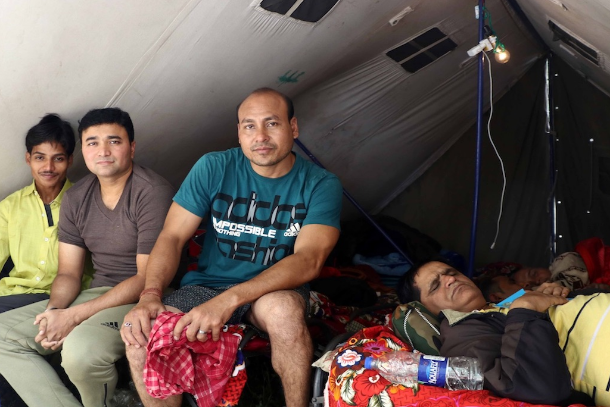Many locals in the Muslim-majority state welcome the Hindu influx and condemn past violent attacks

Amarnath pilgrimage in violence-scarred Jammu and Kashmir state, where an Islamic secessionist movement continues unabated. (Photo by Umar Manzoor Shah/ucanews.com)
The journey is assisted by the Indian army and the state government because of its precipitous mountain route and Islamic militants fighting Indian rule who target the pilgrims. On July 10 last year, militants attacked a bus carrying Amarnath pilgrims in southern Kashmir’s Anantnag district, killing seven and wounding 19. This was the largest attack on the pilgrimage since 2000 when 21 people were killed by militants using grenades. So far, 44 pilgrims have died in various attacks. Banergee said his family and friends continue to worry. “They didn’t want me to go,” he said. “But I was adamant because I wanted to visit the shrine at least once in my life.” Banerjee said that on arrival in the Kashmir Valley his own fears vanished as he did not encounter hostility. “I will pray for peace in the region,” he said. Ishan Tyiagi, a government employee in northern Uttar Pradesh state, said his family was also unhappy about his decision to participate. “The place is marred by violence,” he said. “In view of the militant attacks, they were concerned. I cannot comment over what militants are doing here but as far as the local people are concerned, they welcome you and are very hospitable — I feel quite safe.” Mohammad Ismail Bhat, a local who guides Hindus to the cave, says the religious trek is an important source of income for him and he awaits it every year. “No religion teaches hatred and at the end of the day we are all humans with emotions and love,” he said. The pilgrims were respectful, said Bhat, who earns 500 to 1,200 rupees (US$7-15) a day. Sajad Ahmad Dar, a 32-year-old local, says it is also a festive time for him and others assisting the pilgrims. “My father has two ponies that are used by the pilgrims to go to the cave,” Dar said. “I sell tea and this is the primary source of income for our family.” Dar said militant attacks tarnished the image of Kashmir, a region known worldwide for its hospitality. “Killing innocents is nowhere a justifiable act,” he added. “Whatever happened in the past must not happen again.” Islamic militants have stepped up violence since 1989 with the aim of establishing an independent state or joining Muslim-majority Pakistan, India’s arch-rival and neighbor. Rights groups estimate that the conflict has cost 100,000 lives, but Indian officials put the death toll at closer to 47,000. Those killed include civilians, militants and army personnel. Some groups in Kashmir criticize what they describe as negative environmental impact of the pilgrimage. A report released last year, ‘Amarnath Yatra: a Militarized Pilgrimage,’ compiled by non-government organizations Equations and the Jammu and Kashmir Coalition of Civil Society, said Hindu nationalists had manipulated the event to further their goal of Hindu hegemony in India. The report added that human waste of pilgrims contaminated water supplies and spread disease as well as exacerbating the impacts of flooding. Not all critics of the pilgrimage are Muslims. Swami Agnivesh, a Hindu religious leader and social activist, links more than 300 deaths in 2014 floods in the area to the environmental impact of the visitors. The pilgrimage began when a shepherd discovered the peculiar ice formation in the cave in the late 1700s, which a Hindu priest then visited and declared to be the mythical home of Lord Shiva. Until the Indian state was formed in 1947, pilgrims were only few a thousand, mostly ascetics and Hindus from adjoining areas. The number of pilgrims peaked at to 634,000 in 2011 before declining but the duration of the pilgrimage, traditionally two or three weeks, steadily extended to eight weeks.

Interesant post